Key Takeaways
- Fleas are tough to spot on black dogs, but knowing the signs helps.
- Regular inspections with flea combs and proper lighting are crucial.
- Immediate action and treatment are vital for controlling infestations.
- Preventative measures significantly reduce the risk of recurring fleas.
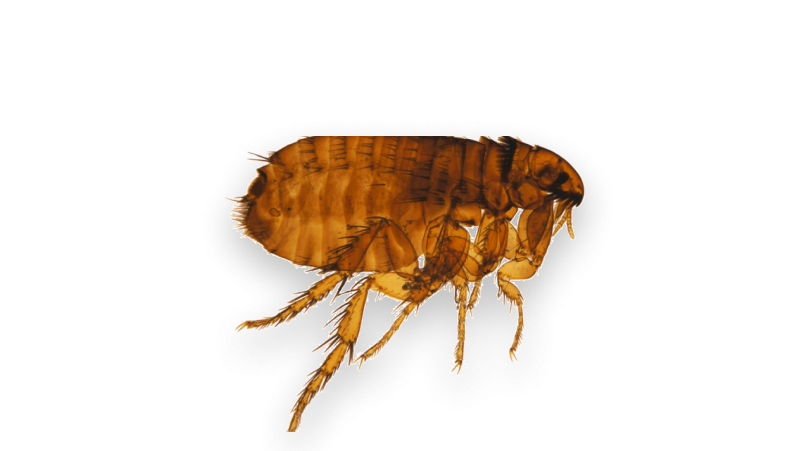 Finding fleas on your dog can be challenging, but this is especially difficult when your cute friend has black or black fur. Fleas are small, dark brown insects that originally mix in black coats, often hidden until your dog is extremely uncomfortable. You might wonder, “How am I supposed to spot these tiny pests in such dark fur?” Honestly, it’s not easy, but the good news is—it’s doable. Let’s explore how to detect fleas on your black dog by focusing on apparent symptoms and practical methods.
Finding fleas on your dog can be challenging, but this is especially difficult when your cute friend has black or black fur. Fleas are small, dark brown insects that originally mix in black coats, often hidden until your dog is extremely uncomfortable. You might wonder, “How am I supposed to spot these tiny pests in such dark fur?” Honestly, it’s not easy, but the good news is—it’s doable. Let’s explore how to detect fleas on your black dog by focusing on apparent symptoms and practical methods.
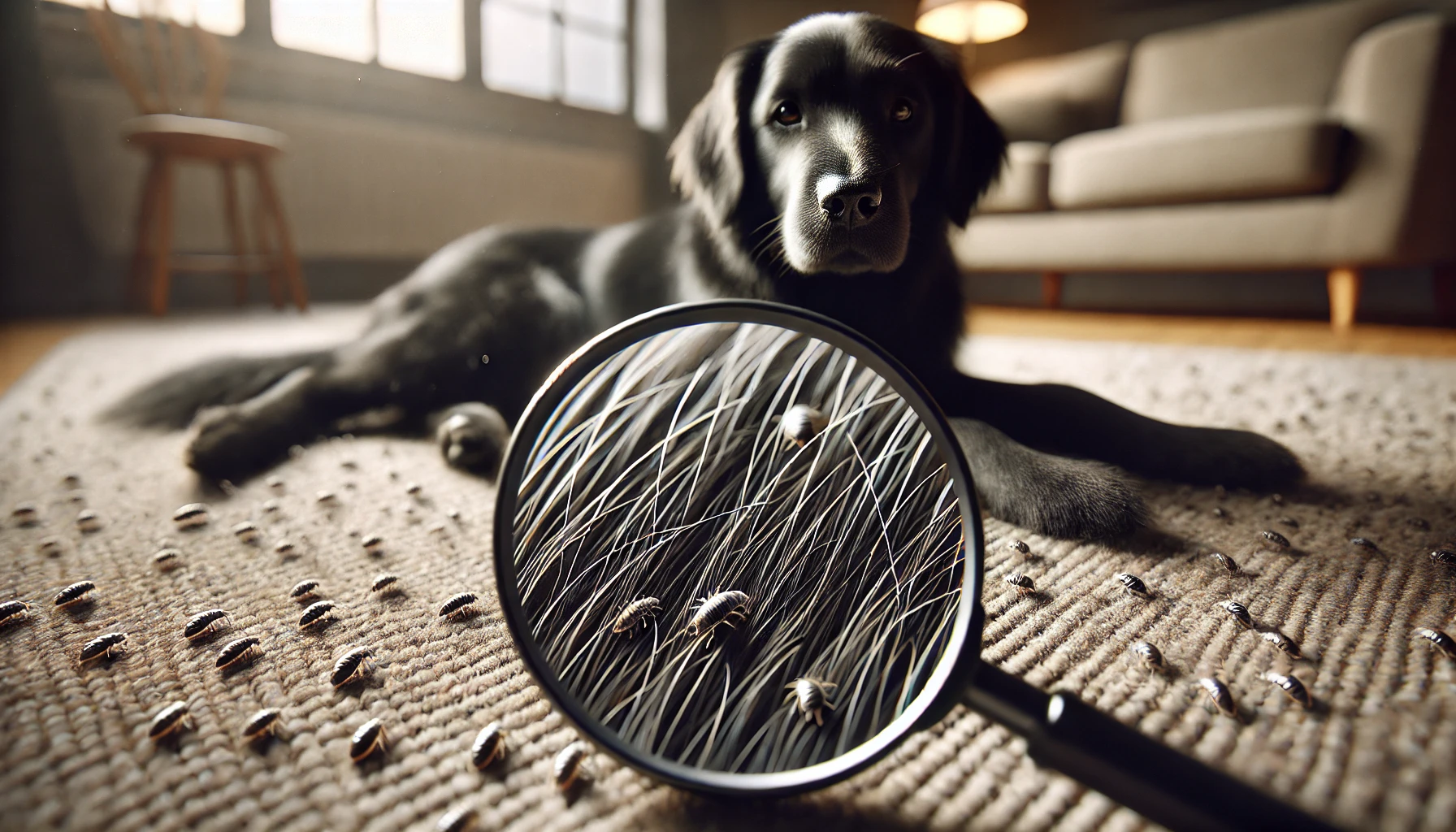

Not getting a solution?
Get your free pest control estimate today!Why Fleas Are Harder to Spot on Black Dogs
The flea is very small – about size of a sesame seed – and their dark color provides them an ideal disguise against the black fur. Imagine that it is trying to spot a small black bug on an equally dark surface – it’s like finding a needle in a histor! But don’t worry, you are not trapped in this difficult situation. All you need is a little patience and proper techniques. Left, flea does not just bother your dog; They can trigger severe skin issues and allergies and lead anemia from prolonged blood loss.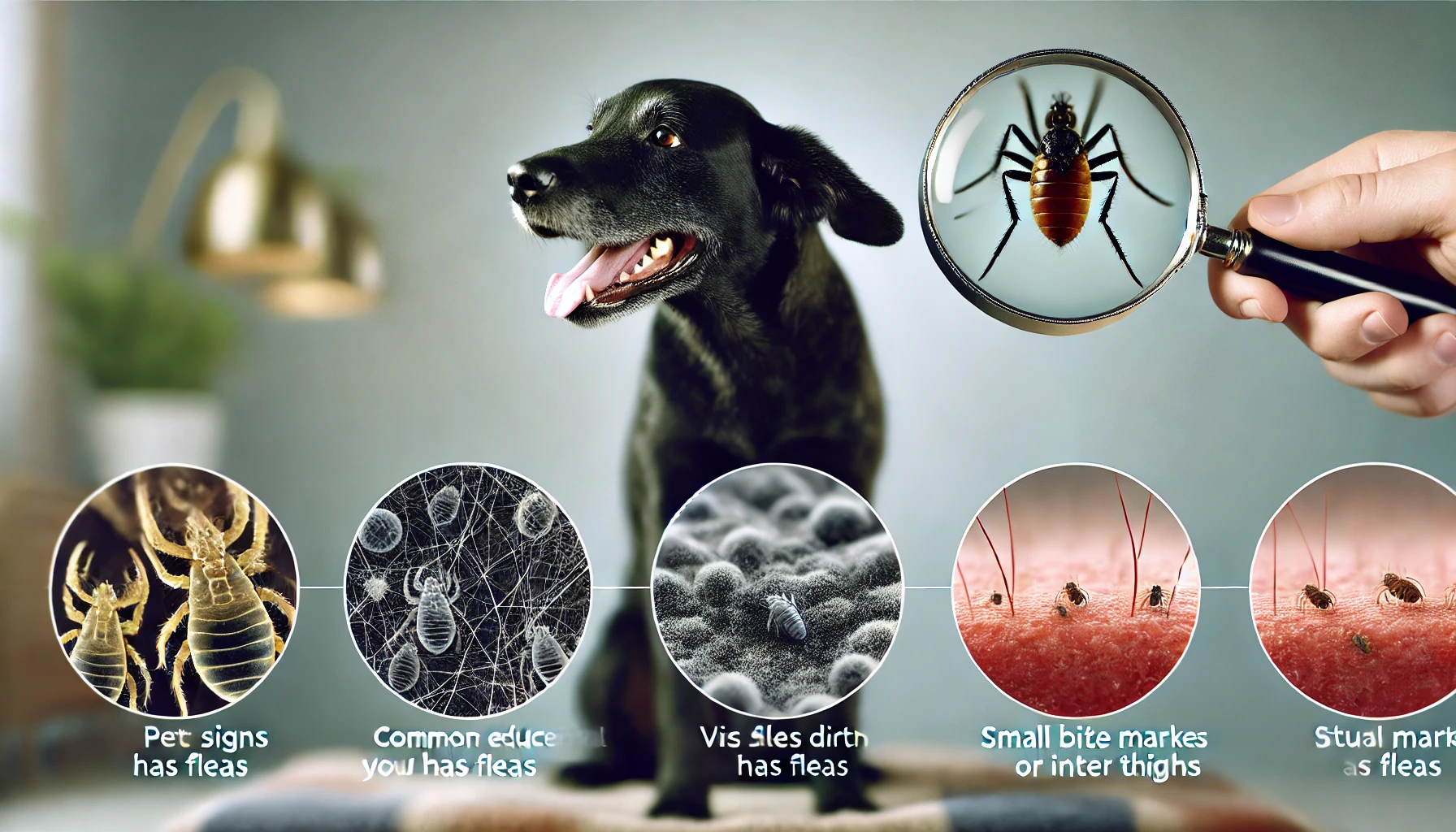
Common Signs Your Black Dog Has Fleas
Here’s a closer look at the common clues your dog might give when fleas are causing trouble: Excessive Scratching and Biting Have you ever seen your dog scratching, chewing, or cutting in some places continuously? Flea usually targets the base of the tail, neck, ear and back. Their bite is disturbed by your dog, which urges almost unmistakable scratches. Red, Irritated Skin So scratching and biting can make your dog’s skin inflamed, red, and sore, often resulting in scabs or infections. Flea saliva contains irritating allergens, causing a nasty condition known as flea allergy dermatitis in sensitive dogs. Hair Loss or Patchy Fur Is your dog’s coat a little patch recently? Flea can be noted to fall hair loss from flea irritation, especially around the tail and around the lower back. If you notice the bald patch, the fleas may be a criminal. Flea Dirt One sure giveaway is flea dirt—tiny, black, pepper-like specks found on your dog or their bedding. What is flea dirt exactly? It’s flea poop composed chiefly of your dog’s digested blood. Gross, right? But it’s an unmistakable indicator of fleas. Visible Fleas Although it’s tough, sometimes you might spot fleas actively jumping or crawling on your dog’s fur. This usually happens during grooming or inspections under intense lighting. Keep your eyes peeled! Restlessness and Agitation The flea are incredibly disturbing, causing dogs to become restless or excited. If your cool dog usually cannot bus suddenly, then frequent shifting or scratching, flea may be blamed. Flea Bites on Humans If fleas have invaded your home, you’ll likely notice itchy red bites around your ankles or lower legs. Unfortunately, fleas don’t discriminate between pets and people!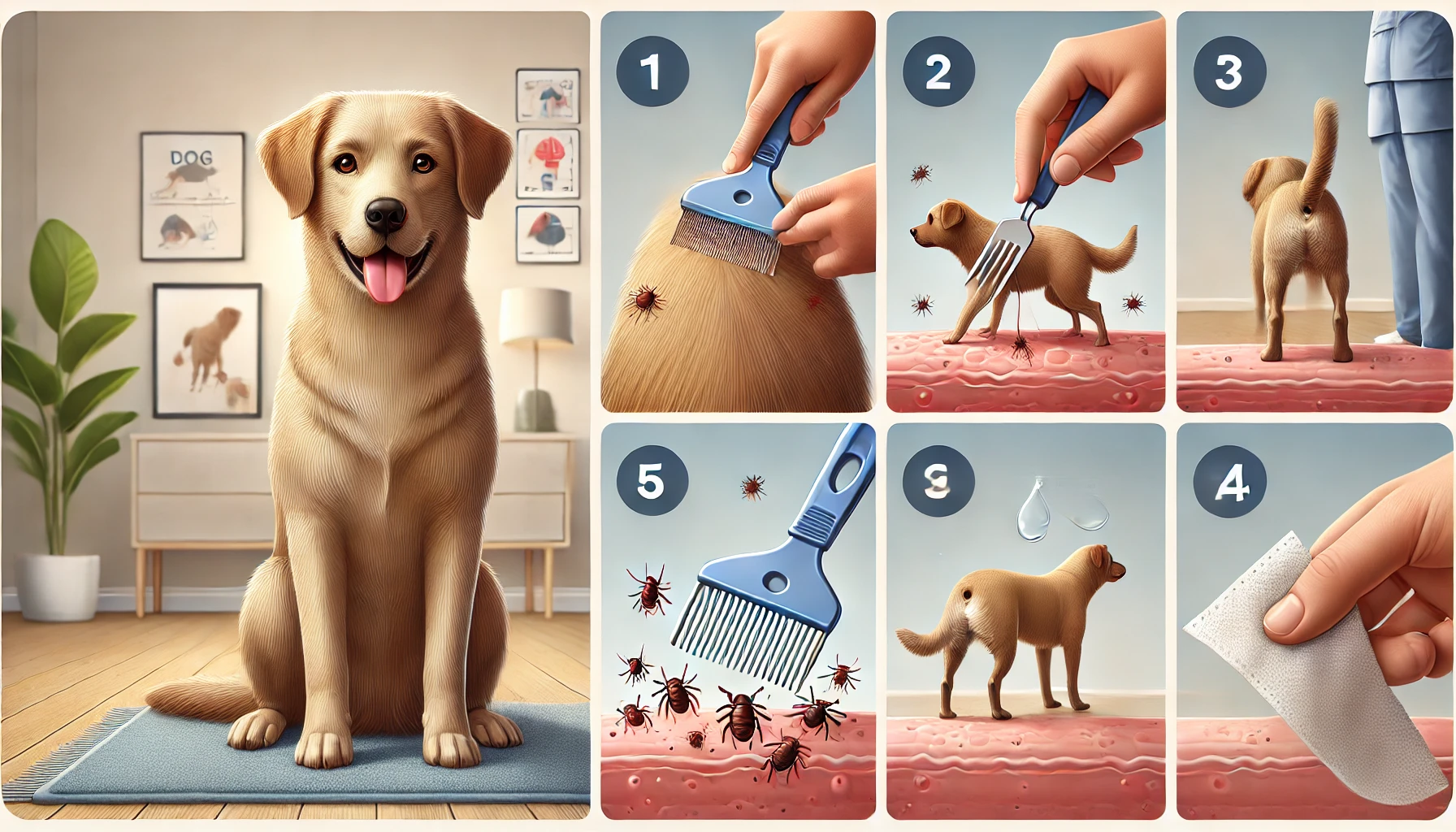
Step-by-Step Guide to Checking Your Black Dog for Fleas
Here’s your go-to guide for finding fleas: Step 1: Gather Essential Tools First things first: grab a flea comb, white paper towels, a bowl of warm, soapy water, and a flashlight or bright light. Good lighting makes all the difference—seriously, don’t skip it. Step 2: Thoroughly Inspect Your Dog’s Fur and Skin Settle your dog comfortably, gently part their fur, and focus especially behind the ears, neck, collar, armpits, belly, groin, and tail base. Using a flashlight can genuinely help reveal these tiny pests. Step 3: Comb Through the Fur Take your flea comb and methodically comb through your dog’s coat from head to tail. After every pass, carefully check the comb. Look closely—fleas and flea dirt can be easy to miss. Step 4: Conduct the Flea Dirt Test If you find suspicious specks, put them on a damp white paper towel. Flea dirt will turn reddish-brown when wet. Ordinary dirt or debris won’t change color. It’s a simple yet foolproof method. Step 5: Optional Nighttime Flea Trap Still uncertain? Set a simple flea trap overnight. Place a shallow dish of warm, soapy water beneath a small lamp or nightlight. Fleas attracted to the warmth and light will jump in and drown—giving you a definitive answer by morning.
Immediate Steps After Discovering Fleas
Here’s what you need to do right away: Treat Your Dog Promptly Immediately start flea treatment using products recommended by your vet—flea shampoos, topical treatments, or oral medications. Follow those instructions to the letter for best results. Thoroughly Clean Your Home Wash your dog’s bed in warm water. Vacuum your carpets, rugs, furniture, and every corner and loves your dog. Be sure to throw the vacuum material immediately; Pissu can survive inside a vacuum! Treat All Pets Simultaneously If you have other pets, fleas have likely visited them, too. Treat all pets simultaneously to break the cycle and avoid repeated infestations. Seek Veterinary Assistance if Needed If you notice severe symptoms such as extreme skin irritation, infections, or signs of anemia, don’t hesitate to contact your veterinarian. Professional advice ensures quick relief and healing.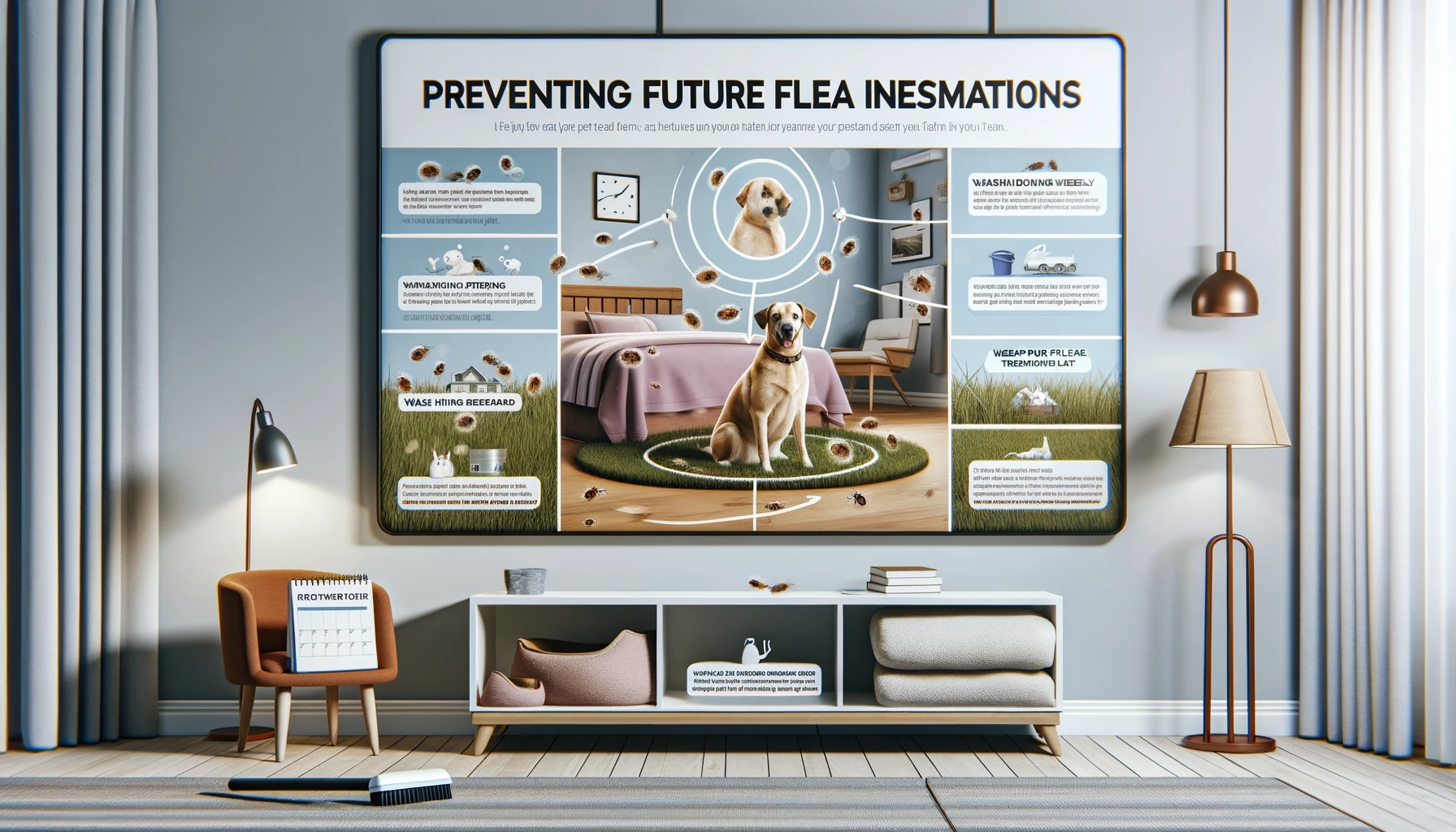
Preventing Future Flea Infestations
- Stay ahead of fleas with these simple yet effective strategies:
-
Year-Round Preventatives: Use vet-recommended flea treatments like chewables, topicals, or collars to keep fleas at bay consistently.
-
Routine Grooming and Inspections: Regularly check your dog—especially after walks or outdoor play—for signs of fleas and irritation.
-
Maintain a Clean Environment: Vacuum floors, wash pet bedding, and keep your yard tidy to remove flea hiding spots.
-
Minimize Exposure: Avoid contact with stray animals or untreated pets, as they can easily pass fleas to your dog.
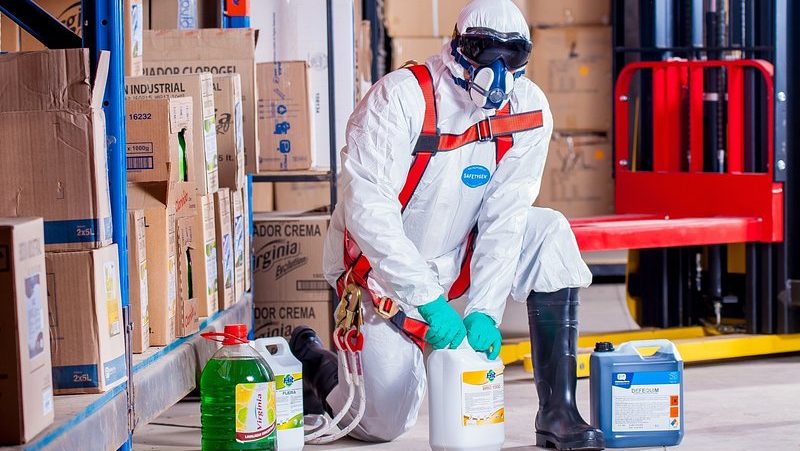
Importance of Early Detection
Early detection makes flea management simpler, cheaper, and healthier for your pet. Spotting fleas early prevents minor issues from ballooning into major health concerns, like infections or anemia. Keep a close eye—your dog will thank you (in tail wags and cuddles, of course!). If you feel things have gone out of control, it is advised to contact pest control professionals. Our team can provide a customized approach to protect your home effectively.Visit our Species, Control, and DIY Guide sections for additional resources on fleas and ways to tackle a fleas infestation.





